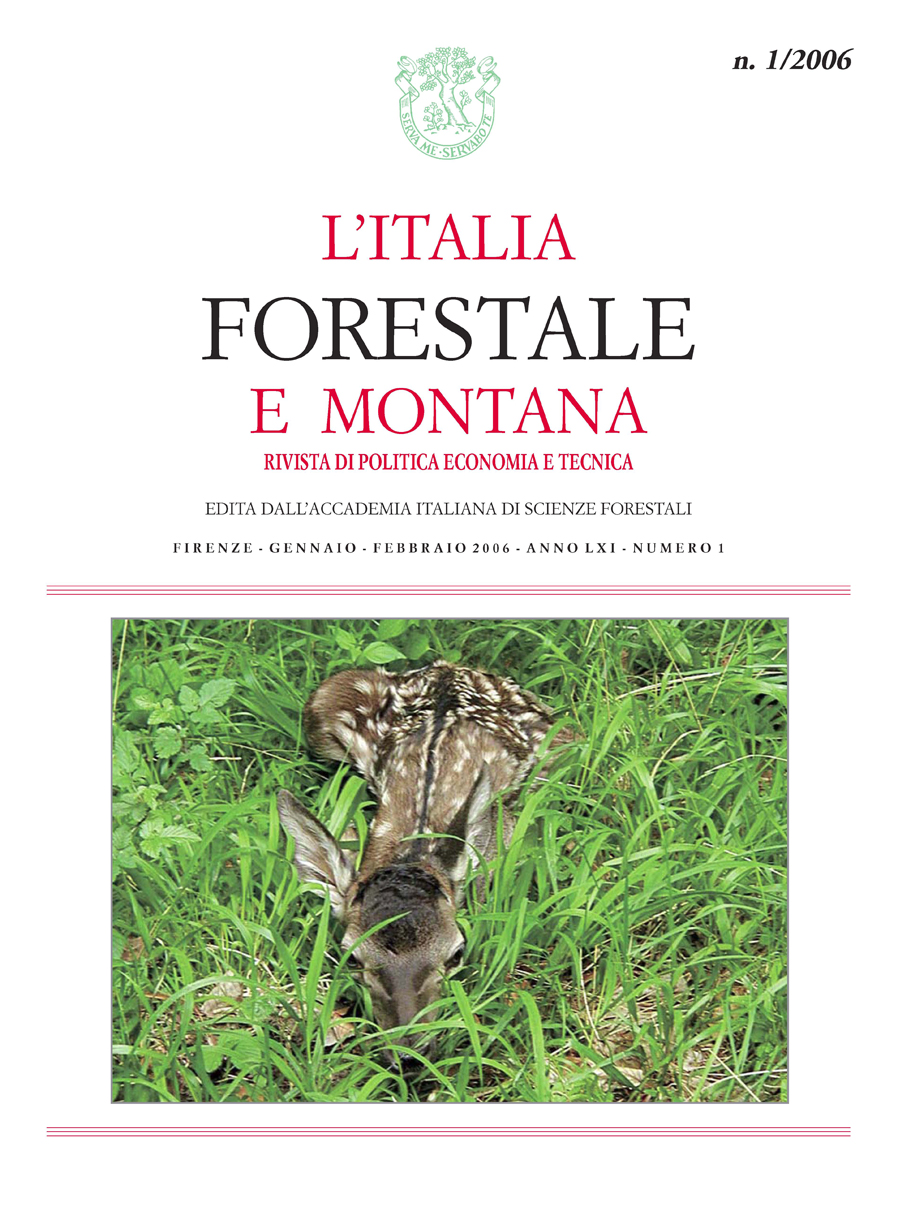Articles
Published 2006-02-09
Keywords
- red deer,
- forest regeneration,
- wildlife management,
- browsing impact
Copyright (c) 2006 Italian Journal of Forest and Mountain Environments

This work is licensed under a Creative Commons Attribution-NonCommercial 4.0 International License.
Abstract
Red deer (Cervus elaphus L.) populations in Italy are steadily increasing since second world war, due to both natural recolonization and active reintroduction. Their browsing impact on forest regeneration is becoming an issue of growing interest for people concerned in forest, wildlife and protected areas management. Close-to-nature silviculture is facing ungulates impact as one of its most relevant problems.To get a balance between these two components of the ecosystems some measures of good practice in wildlife management and some others referring to forest management are available: nevertheless all the measures have to be correctly integrated and implemented. Some first experiences are being developed in regional forest planning. Culling of red deer populations is often considered a pre-requisite for implementing correct forestry practices.
A careful planning of culling, both in space and time, is recommended: winter enclosures and artificial foraging are
common practices in the Alps, too. Lacking of open areas, meadows and/or pastures inside the forest is considered one of the major causes of unsustainable impact to forest regeneration provoked by ungulates. Experiences carried on during the last ten years in Trentino province and in Stelvio National Park are discussed in detail.

